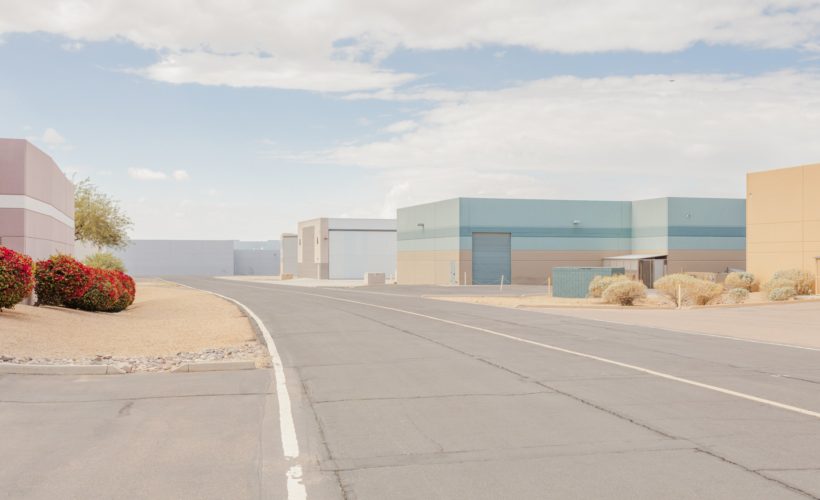Jesse Rieser’s memories of growing up in Springfield, Missouri in the 1990s unfold against a familiar retail backdrop: storming the aisles of Toys R Us with his brother; meeting friends at the mall to flirt with girls and play videogames; hunting new bands in the CD racks of Best Buy.
Now the era of retail that defined Rieser’s youth is waning. He documents the death spiral in Retail Apocalypse, capturing the ruins of big box stores and gutted malls where the scent of pretzels and perfumes has vanished along with the logos.
“When you think of architectural ruins, you think of a civilization or a time that has passed,” Rieser says, “but this wasn’t a previous civilization. It was just a few years ago.”
Shopping malls, discount retailers and big box stores emerged after World War II as middle class folks flocked to freshly built suburbs. The warmth of Main Street, where store clerks knew customers by name, gave way to uninspired strip plazas that delivered bang for buck. Now many are casualties of the same demand for comfort and affordability that spawned them, and that now lets you browse everything from stilettos to cat food in your PJs. Sure, shoppers still make most retail purchases in brick-and-mortar stores. But former staples like Circuit City, Blockbuster, and Toys R Us have shut their doors; department stores like Sears, Macy’s, and JCPenney have shuttered hundreds of locations; and experts predict hundreds more low-tier malls will close.
Meanwhile, e-commerce shipping and distribution warehouses are going up faster than you can click “buy,” with 243 million square feet of industrial real estate erected last year alone. Each of these massive rectangles can gobble up more than a million square feet, their windowless concrete walls towering up to four stories high. “When you’re driving around these business parks, there’s almost a level of mystery,” Rieser says. “It’s like, ‘What’s in here?’ It’s so faceless.”
Rieser began photographing them in 2015 and soon followed the story backwards, to the brick-and-mortars collapsing in their wake. Cruising the suburbs of Arizona, New Mexico, and southern California, he stopped at more than 150 malls and big box stores that had either closed or were about to. He photographed with a Canon 5DS R, capturing entrances boarded with plywood, parking lots overtaken by weeds, and facades bearing the stubborn traces of removed signage. It’s dreary stuff, but the way Rieser shoots it—playing up pastels and sunshine—lightens the mood. “It’s finding this balance between beauty and despair—that dance,” he says.
It’s hard to mourn landscapes that were eyesores to begin with. But Rieser’s project goes deeper, making you ponder how the internet has impacted public space and what society looks like when physical transactions become unnecessary. “I’m not saying that it’s all going away,” Rieser says, “but you can’t help but wonder if things could get so easy that we limit our interactions and place in a community, or what that community even looks like when we’re so autonomous and isolated.”
More Great WIRED Stories
- Tech disrupted everything. Who’s shaping the future?
- Captain Marvel and the story of female superhero names
- Segway e-skates: The most dangerous object in the office
- Enlisting our own germs to help us battle infections
- An oral history of Apple’s Infinite Loop
- Looking for more? Sign up for our daily newsletter and never miss our latest and greatest stories
Source:WIRED











